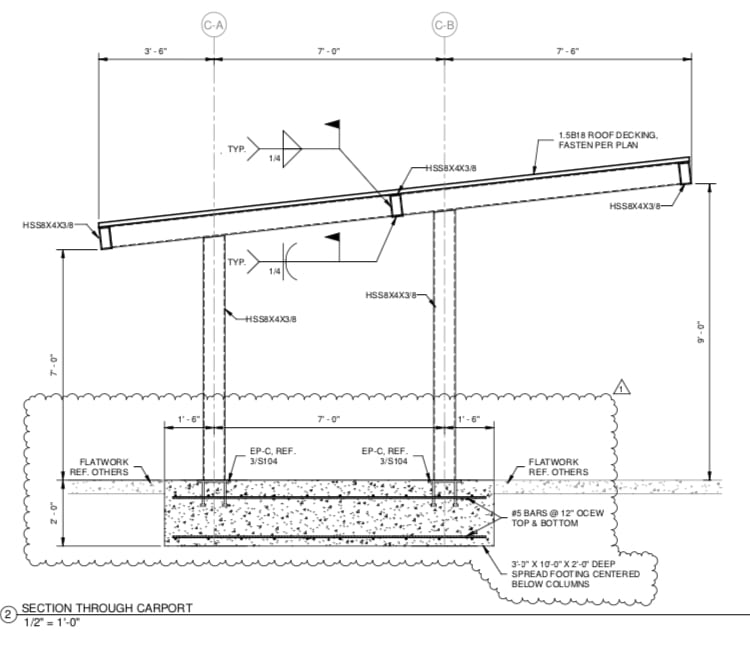VentengInfo
Structural
I am designing a carport (frame) to accommodate solar panels that must have a 30 degree in slope. Each bay must fit 2 cars ~ 7m x 4m, with the lower height 2.5m. What would be the best structural approach:
[ol 1]
[li]a frame with HSS for the columns, 30 degrees sloped I beam for the rafters and C channels for the purlins, versus [/li]
[li]a frame with HSS for the columns, 0 degrees I beam for frame perimeter, 30 degrees OWSJ and channels for the purlins [/li]
[li]other [/li]
[/ol]
Has anyone designed a similar structure (carport)? Would concrete foundations, using sonotubes/bolts for the base plate, support reactions?
Thanks for the feedback.
Regards,
Ventenginfo
[ol 1]
[li]a frame with HSS for the columns, 30 degrees sloped I beam for the rafters and C channels for the purlins, versus [/li]
[li]a frame with HSS for the columns, 0 degrees I beam for frame perimeter, 30 degrees OWSJ and channels for the purlins [/li]
[li]other [/li]
[/ol]
Has anyone designed a similar structure (carport)? Would concrete foundations, using sonotubes/bolts for the base plate, support reactions?
Thanks for the feedback.
Regards,
Ventenginfo


